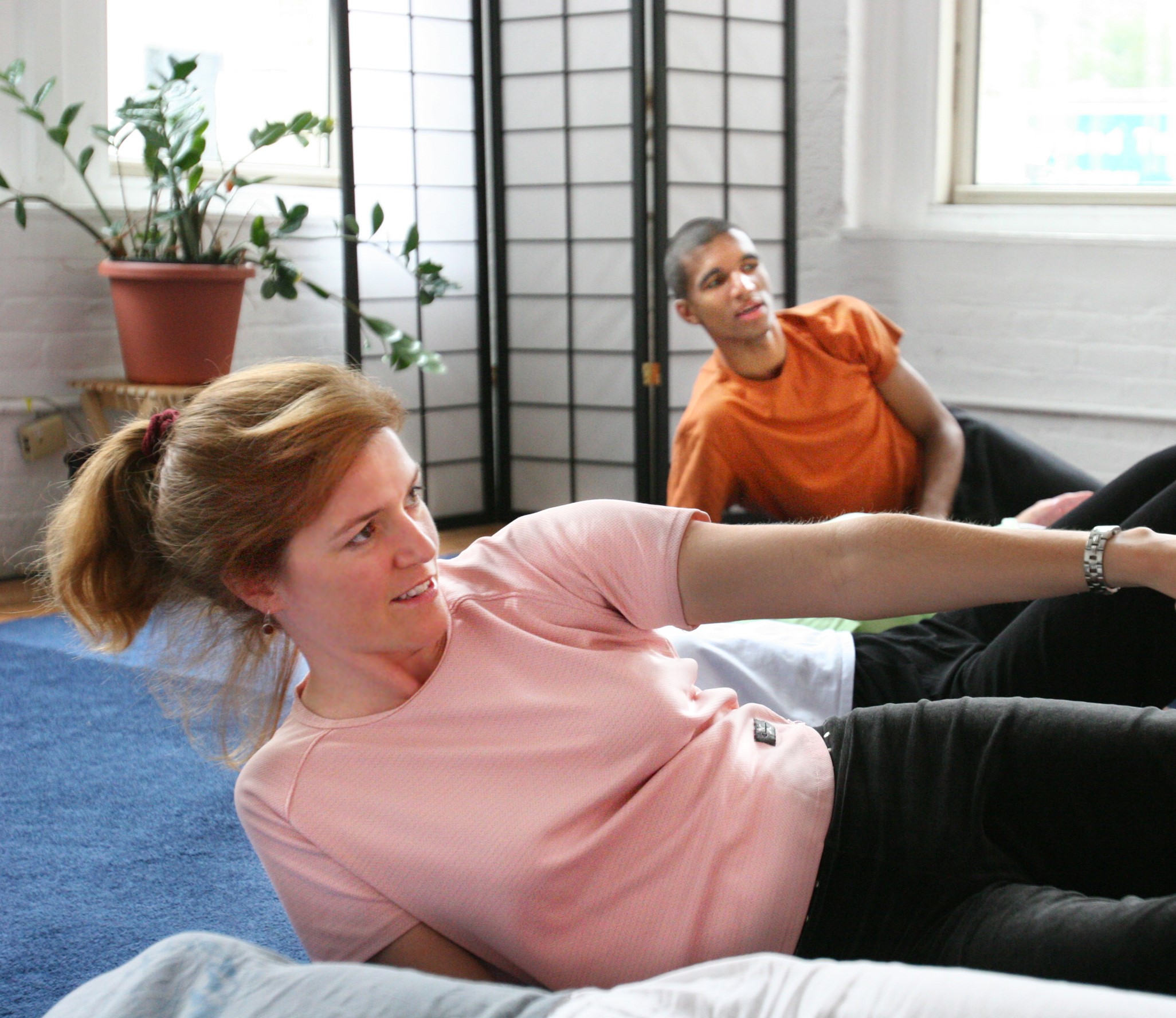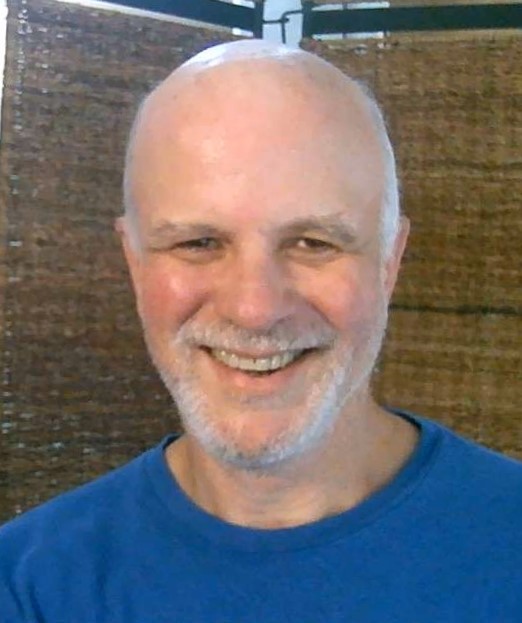Why This Combo?
The Feldenkrais Method works most effectively if you practice regularly. And often. Each lesson teaches you how to be a little bit better than you already are. The process of improvement can be much more pleasant when we're allowing the improvement to take place at a slower pace. It's easier to maintain your sense of comfort with a more relaxed pace when you know you are not trying to get to a specific end. Improvement is more lasting when it is realized over time.
Because engagement with mindfulness meditation is already generally accepted as an ongoing practice--one you attempt to return to, day after day--juxtaposing mindfulness meditation and a Feldenkrais class is a great way to come to understand the value of making your Feldenkrais work into a regular, ongoing practice, as well.
A Feldenkrais practice is simply a way to be kinder to yourself; to be more self-nurturing; to regularly remind yourself, through action, rather than just thought, of what you can do and how you can do it more comfortably and effectively. Over time, you'll feel better and better while you gain confidence and a sense of being more and more able to do more of what you'd like to do, no matter what that might be.
And all the while, you’ll be enhancing your mindfulness practice as well. You’ll come to see the attention you pay to yourself in movement during Feldenkrais classes as a very useful and enjoyable “object” of meditation.
What's it All About?
These twice-monthly, 90-minute classes will include one Feldenkrais Awareness Through Movement lesson and one (or sometimes two) 10-minute mindfulness meditations. I’ll teach the Feldenkrais lesson live each week and the mindfulness meditations will be led, via recording, by Sam Harris, author of several books including, Waking Up, which is the namesake for Sam’s meditation app. The kind folks at wakingup.com have given me permission to use Sam’s recorded meditation sessions during my classes.

Participant Video Response
Susan M. shares her response to class during the discussion section at the end of one of the July, 2022 classes.
Example Curriculum
- July 9, 2022 Building a Movement Pattern
- July 23, 2022 Exploring Role of the Sternum in Turning
- August 6, 2022 Intro to Utilizing Weight/Mass in Movement
- August 20, 2022 Using conceptual process to enhance self-image
- September 3, 2022 Working Small for Big Internal Change
- September 10, 2022 Dealing with unpleasant sensations and obstacles
- October 1, 2022 Sensing Skeletal Force
- October 15, 2022 Lengthening Limbs from Your Torso
- November 12, 2022 Exploring True Comfort Via Rotation
- November 19, 2022 Attention, Noticing, Comparing Through Rolling
- December 3, 2022: Finding Synergy Through Vision
- December 17, 2022: More Vision-Turning from the Back of the Eyes
- January 7, 2023 Better "Box" Breathing
- January 21, 2023 - More work with the breath in both modalities
- February 4, 2023 - Visual field in meditation and Feldenkrais work
- February 18, 2023 - Improving visual accuracy (focus)
- March 11, 2023 - Breathing, Flexing, Extending, Sensing
- April 1, 2023 - Directionality (elements of turning)
- April 15, 2023 - Emotions and Imagination
- May 6, 2023 - Attention in Practice; Attention in Life
- May 20, 2023 - Simple Practice at Mindfulness in Action
- June 3, 2023 - Meditating on Everything - Freeing Ribs & Shoulders
- June 17, 2023 Silence and Breath
- July 1, 2023 - Sitting Alternatives: Allowing Stillness or Movement for Comfort
- July 15, 2023 - Doing and Non-Doing in Feldenkrais and Meditation
- August 5, 2023 - More Doing and Non-Doing; Attention & Complexity
- August 19, 2023 - Attention Expands and Contracts Awareness
- September 1, 2023 - Intention as a "request" to your nervous system
- September 16, 2023 - Stress, Freedom, Constraint and Awareness
- October 7, 2023 - Breathing and Our Relationship to Gravity
- October 14, 2023 - Meditation in the Middle - Side lying twist
- December 9, 2023 - Vision Month - Paying Attention While Seeing and Breathing
- December 16, 2023 - Vision Month - Improving Vision by Improving the "Body Map"
- February 3, 2024 - Toes and Attention
- February 17, 2024 - Fun! What's fun?
- March 2, 2024 - Attention and Distraction during familiar Movements
- March 23, 2024 - Sensing Power, Restriction, Mass and Gravity in Movement
- April 13, 2024 - Inhaling or Exhaling: Which is Better When?
- April 20, 2024 - Turning in an Unfamiliar Way
- May 4, 2024 - Becoming More Aware of That Which We Are Not Aware
- May 18, 2024 - Emotion and Action
- June 1, 2024 - Explore How Changing Intention Effects Action, Comfort, Emotion
- June 15, 2024 - Breath and Breathing

Would You Rather Try a Live Class Before You Subscribe?
You can register for and take the live classes one at a time, if you prefer. You won't get access to the recordings and the per-class price is a bit higher, but still a bargain at only $17.50/class.
If you'd prefer to register and pay for a single live class,
Use this link to register and pay for a single Feldenkrais / Mindfulness class.
Still Unsure?
Over the course of my practice, I’ve learned a lot about how the human body functions. And I’ve learned the crucial importance of the mind in improving that function. I’ve embraced more and more fully this inescapable idea: The Feldenkrais Method works primarily to improve brain function. Movement is simply the pathway we use to influence your brain to function more efficiently. Physical improvement through the Feldenkrais Method comes from changing your brain and then reaping the benefits through your body.
But wait, you might be thinking, what about bones? What about joints? What about muscles? None of them do anything without instructions from the central nervous system (that includes your brain). To begin to create a more accurate picture of how one functions as an organism, it becomes useful to examine the functioning and results of brain processes that reach one’s conscious awareness and then to look at the vastly more complex and voluminous number of processes that remain outside of our conscious awareness. We may consciously decide where and when to move, but we have very little conscious awareness of how movement is taken from intention to completed action. Which muscles are contracted, how hard and when? Further these variables can be applied to different parts of most muscles in a nearly infinitely variable number of patterns, combinations and sequences. You likely have no ready sense of how many of those movement patterns and combinations you have come to habitually rely on because you have repeated them in the same way, over and over. This is another property of brains: if a combination or pattern works well enough (we feel successful in the movement) and no new information is introduced (one rarely thinks about alternatives to successfully completed actions) then the brain will continue to rely on the known pattern until something is done to introduce a new and seemingly more effective pattern or combination. That’s what the Feldenkrais Method does. The level of complexity available would instantly overwhelm our conscious mind.
The techniques Dr. Feldenkrais used to influence our brain function are ingenious ways to limit or constrain or change typical movement patterns so that your brain can no longer rely effectively on long-ago learned kinesthetic habit patterns. You are “forced” in the most pleasant way possible to learn to do things differently because under very controlled and safe circumstances we make it more attractive to try new ways of organizing movement than to struggle to maintain old ones. In addition, two crucial keys to unlocking the effectiveness of the Feldenkrais Method are awareness and attention. All the brilliant tricks and techniques in the world won’t work very well if you do not pay attention while utilizing them. Mindfulness training helps you to experience what “paying attention” really means. A mindfulness practice also helps you to observe your mind in a way that reveals better than any other I have found, how your mind really works simply by guiding you to simply observe your mind in action again and again and again.
Each practice enhances the other. Come practice with us and find out for yourself.

